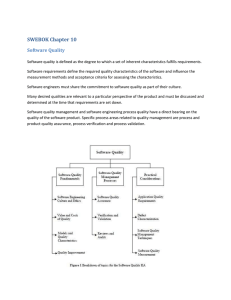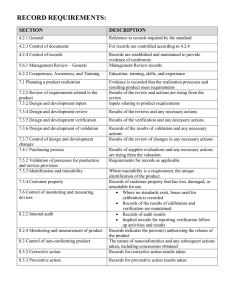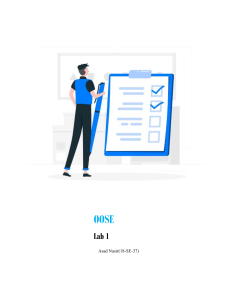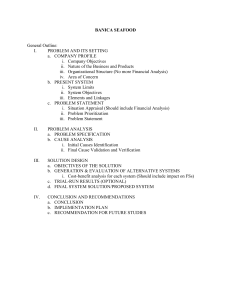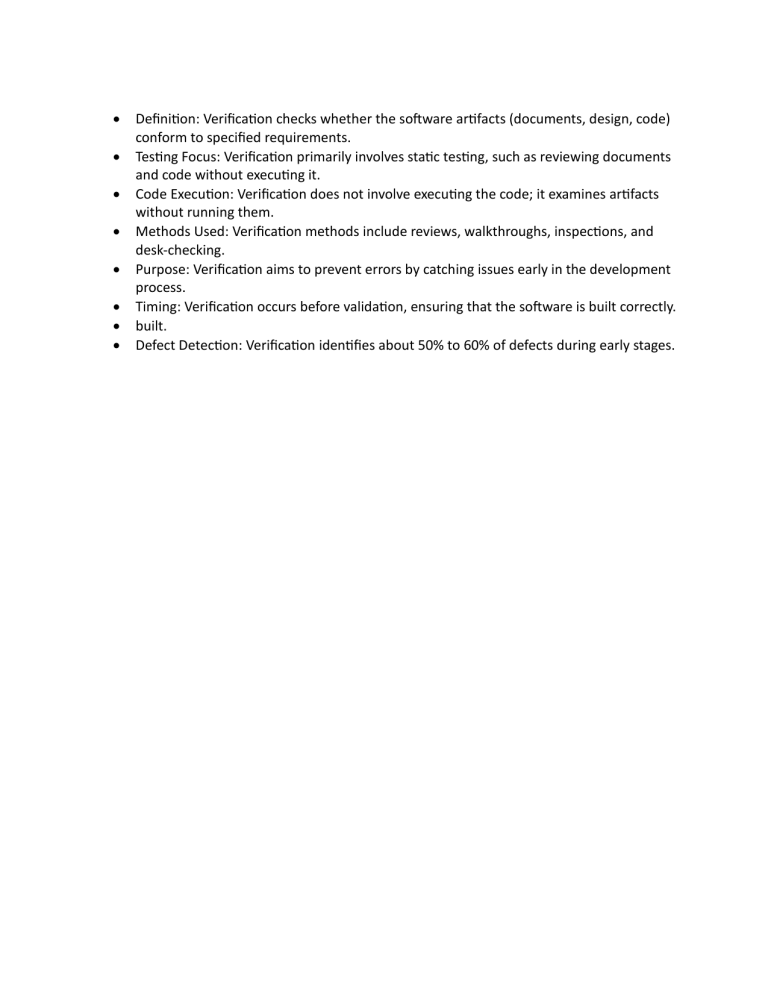
Definition: Verification checks whether the software artifacts (documents, design, code) conform to specified requirements. Testing Focus: Verification primarily involves static testing, such as reviewing documents and code without executing it. Code Execution: Verification does not involve executing the code; it examines artifacts without running them. Methods Used: Verification methods include reviews, walkthroughs, inspections, and desk-checking. Purpose: Verification aims to prevent errors by catching issues early in the development process. Timing: Verification occurs before validation, ensuring that the software is built correctly. built. Defect Detection: Verification identifies about 50% to 60% of defects during early stages. 1. The differences between validation and verification. Definition: Validation ensures that the actual software product meets customer expectations and high-level requirements. Testing Focus: Validation focuses on dynamic testing by executing the software to validate its behavior. Code Execution: Validation includes executing the code to observe its behavior and functionality. Methods Used: Validation methods encompass Black Box Testing, White Box Testing, and non-functional testing. Purpose: Validation detects errors related to actual product behavior and alignment with customer requirements. Timing: Validation starts as soon as the project begins, assessing whether the right product is being built. Defect Detection: Validation finds approximately 20% to 30% of defects that might escape verification. 1. The differences between validation and verification. Definition: o Verification checks whether the software artifacts (documents, design, code) conform to specified requirements. o Validation ensures that the actual software product meets customer expectations and high-level requirements. Testing Focus: o Verification primarily involves static testing, such as reviewing documents and code without executing it. o Validation focuses on dynamic testing by executing the software to validate its behavior. Code Execution: o Verification does not involve executing the code; it examines artifacts without running them. o Validation includes executing the code to observe its behavior and functionality. Methods Used: o Verification methods include reviews, walkthroughs, inspections, and deskchecking. o Validation methods encompass Black Box Testing, White Box Testing, and nonfunctional testing. Purpose: o Verification aims to prevent errors by catching issues early in the development process. o Validation detects errors related to actual product behavior and alignment with customer requirements. Timing: o Verification occurs before validation, ensuring that the software is built correctly. o Validation starts as soon as the project begins, assessing whether the right product is being built. Defect Detection: o Verification identifies about 50% to 60% of defects during early stages. o Validation finds approximately 20% to 30% of defects that might escape verification. 2. The importance of quality assurance in software development Ensuring Customer Satisfaction: o QA plays a crucial role in delivering a high-quality product that meets user expectations. o By identifying and fixing defects, bugs, and errors early in the development cycle, QA enhances the stability and reliability of the software. Preventing Mistakes and Defects: o QA helps prevent mistakes and defects during software development. It emphasizes identifying and addressing potential issues early, reducing the need for costly corrections later. Meeting Quality Standards: o SQA ensures that the software product complies with predefined standards. o Both internal and external characteristics are evaluated to maintain quality. Root Cause Analysis: o Unlike quality control, which focuses on symptoms, QA aims to fix the root cause of defects. o Addressing underlying issues leads to more robust software. Efficiency and Cost Savings: o Early defect detection reduces rework and saves time and resources. o QA minimizes the risk of post-release failures, which can be expensive to rectify. Product Accuracy and Reliability: o QA ensures accuracy, reliability, and adherence to specifications. o It is a deciding factor for successful product launches. Differentiating QA from Testing: o QA encompasses processes beyond testing, including defect prevention, process improvement, and adherence to standards. o Testing is just one aspect of QA, focusing on verifying software behavior. o
